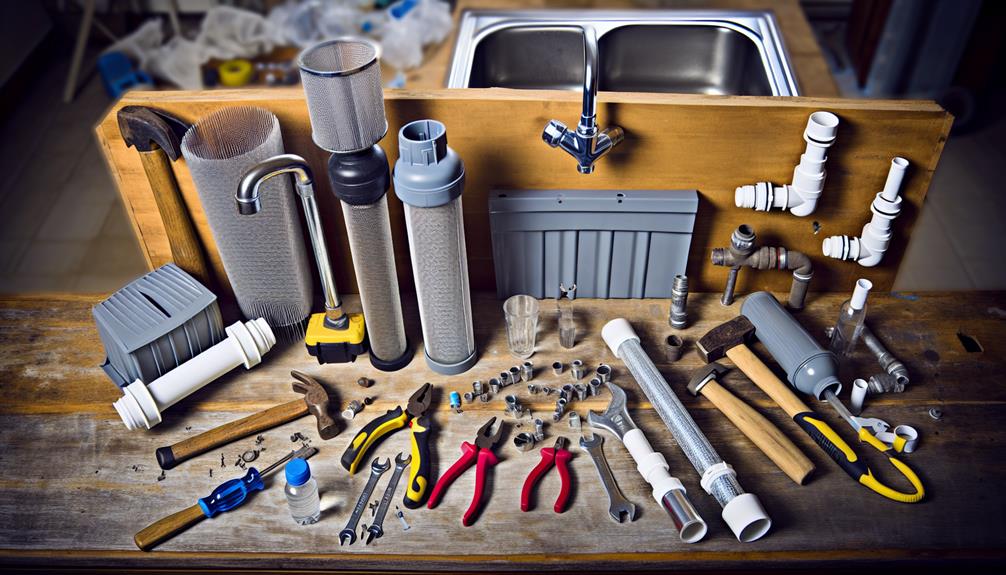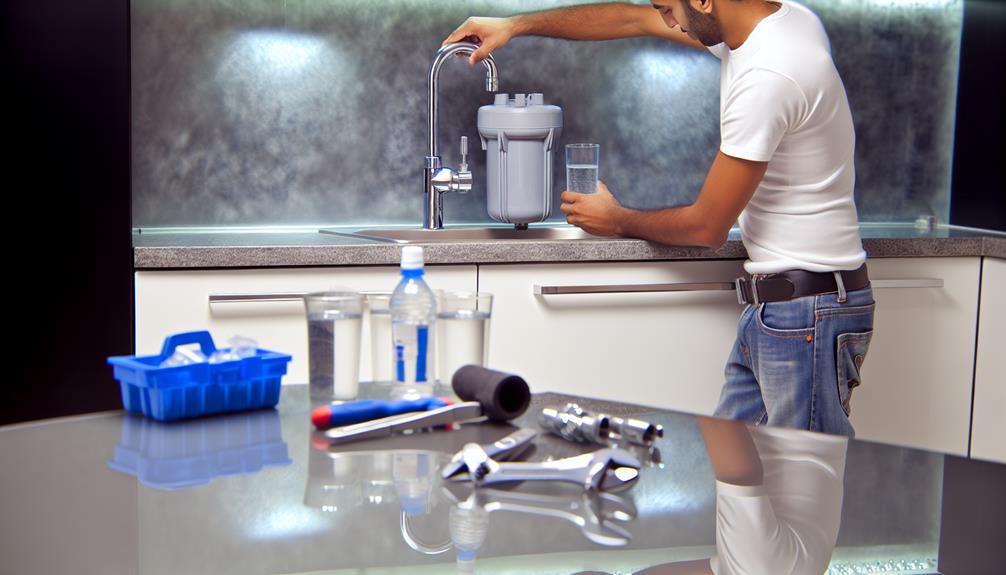Have you ever considered what's lurking in your tap water before it runs through your home's water filtration system? Ensuring that you're sipping on clean, contaminant-free water involves more than just installing a filtration system; it requires your attention and regular maintenance.
You've invested in a sophisticated system to protect your family's health, but neglecting its upkeep can lead to less-than-stellar performance or even a complete breakdown. Regularly replacing filters, cleaning the system, and troubleshooting any issues are tasks you can't afford to overlook.
As we explore the critical steps to maintain your filtration system effectively, you'll discover the nuances that could make all the difference between a sip of purity and a gulp of problems.
Selecting the Right System
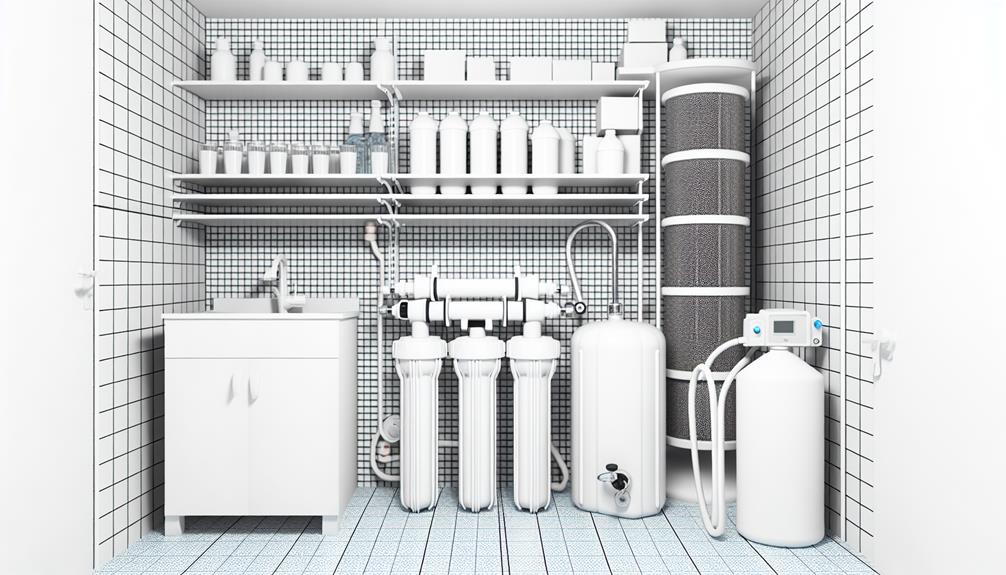
Before investing in a home water filtration system, it's crucial to assess your specific water quality needs and the impurities you need to target. You'll want to start by obtaining a water quality report from your local utility or conducting a home test. This will identify the contaminant types present in your water, which could range from sediment and heavy metals to organic compounds and microorganisms.
Once you've pinpointed the contaminants, you can match them to filtration technologies best suited to remove them. For example, if you're dealing with high levels of chlorine or volatile organic compounds, an activated carbon filter may be most effective. Conversely, for hard water minerals, you might require a water softener or a reverse osmosis system.
Don't overlook the filter lifespan when making your selection. It's not just about initial effectiveness; you need a system that maintains its efficiency over time. Filter lifespan varies widely based on usage and the filtration technology involved. Some may need replacement every few months, while others can last for years with proper maintenance. Always consult the manufacturer's guidelines and consider the long-term commitment to ensure consistent water quality.
Professional Vs. DIY Installation
When installing a home water filtration system, you must decide between hiring a professional or undertaking the task yourself, bearing in mind the complexity and potential risks associated with improper installation. While DIY may seem appealing for its potential cost savings, it's essential to weigh this against the need for technical expertise and the implications for your system's warranty.
Professional installation might incur higher initial costs but offers several advantages:
- Expertise in system selection and proper placement
- Assurance of correct installation, which can impact system longevity and performance
- Warranty protection, as some manufacturers require professional installation to maintain warranty validity
Conversely, a DIY approach can be cost-effective if you have the necessary skills, but consider the following:
- Installation costs may be lower upfront, but mistakes can lead to expensive repairs or system replacements.
- Warranty considerations are crucial; you might inadvertently void the warranty without professional installation.
- The risk of incorrect installation not only affects water quality but can also lead to potential damage to your home.
Carefully evaluate your ability to handle the installation and the importance of maintaining a valid warranty. Sometimes, the peace of mind that comes with professional services is worth the extra investment.
Routine Filter Replacement
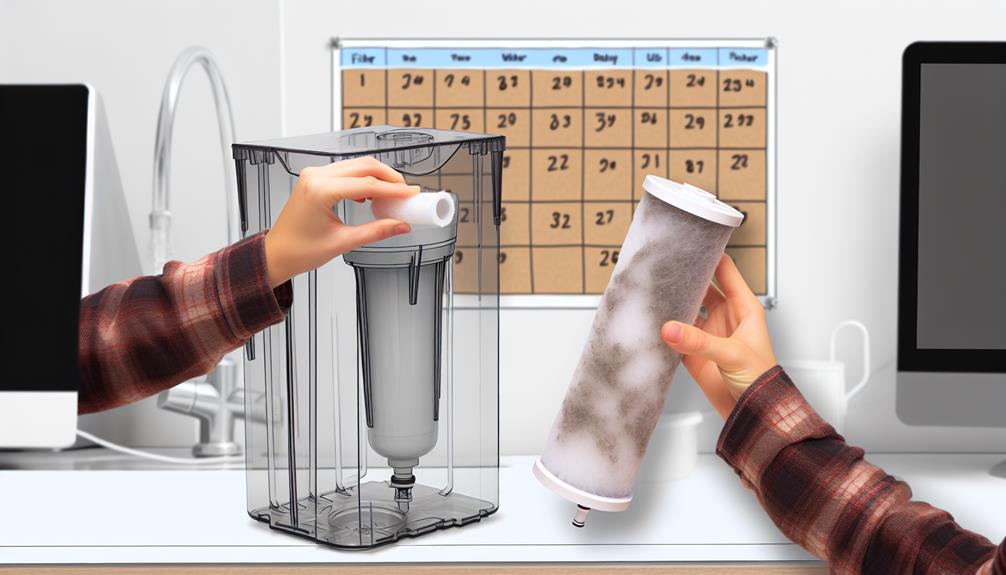
Ensuring your water remains pure and safe, regular filter replacement is a critical component of home water filtration system maintenance. Filter lifespan varies based on the type of filter, your water usage, and the level of contaminants. It's essential to follow the manufacturer's recommendations for replacement intervals to maintain optimal performance.
You'll find that sediment pre-filters typically require replacement every 2-3 months, while activated carbon filters might last 6 months to a year. Reverse osmosis membranes can work efficiently for 2-3 years, but only if pre-filters protect them from clogging particles.
When it's time to replace a filter, first shut off the water supply and relieve pressure according to system instructions. After removing the old filter, ensure you dispose of it properly. Some filters can be recycled, so check with local waste management for disposal methods. Avoid simply tossing used filters in the trash, as they can contain absorbed pollutants.
Install the new filter carefully, making sure it's properly seated to avoid bypass. After installation, run water through the system to activate the filter and remove any carbon fines or manufacturing debris. Keep records of replacement dates, as this helps you stay on top of maintenance and ensures the longevity and efficacy of your system.
System Cleaning and Sanitization
In addition to replacing filters, it's crucial to regularly clean and sanitize your home water filtration system to prevent microbial growth and maintain water quality. Over time, bacteria and other microorganisms can accumulate, potentially compromising your system's efficiency and the safety of your water.
To ensure a thorough sanitization, it's important to follow the manufacturer's instructions. Typically, this involves disassembling the unit to access internal components. Before beginning, shut off the water supply to avoid any mishaps.
When handling cartridge disposal, always wear gloves to minimize the risk of contamination. Properly dispose of used cartridges, as they can contain trapped contaminants and bacteria. After removing the old cartridge, clean the housing with a diluted bleach solution or a cleaner recommended by the manufacturer. This will help eradicate any lingering bacteria.
Maintaining the correct flow rate is also essential for your system's performance. After reassembling and installing new filters, run the system to flush out any residual cleaning solution. The flow rate should return to its normal range, indicating that the system is functioning correctly.
Consider these important points:
- Safety First: Protect yourself with gloves and follow proper cartridge disposal guidelines.
- Thoroughness: Clean every component meticulously to ensure no bacteria remain.
- Vigilance: Monitor the flow rate post-cleaning to confirm system restoration and performance.
Troubleshooting Common Issues
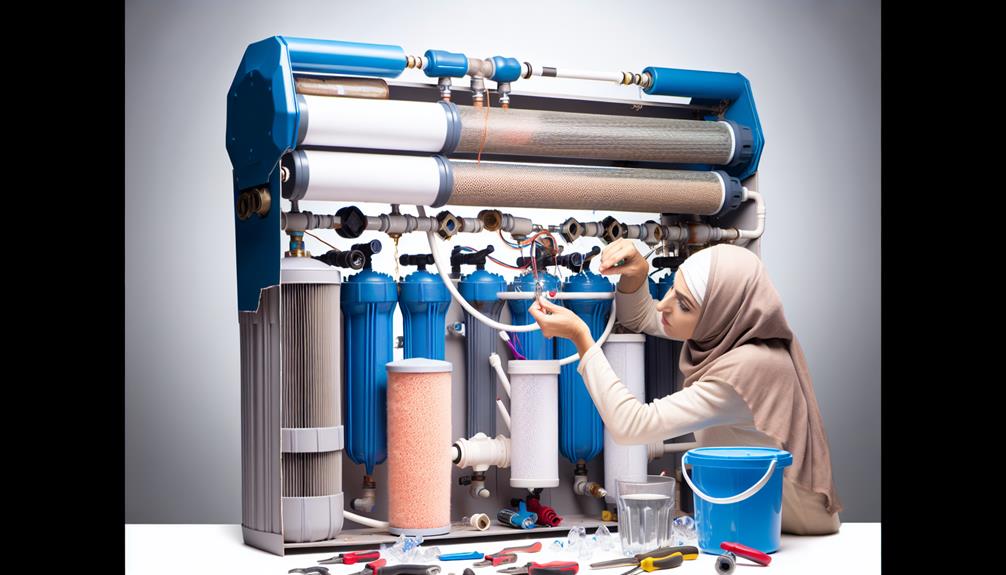
Despite regular maintenance, you may encounter issues with your home water filtration system that require troubleshooting to resolve effectively. Filter lifespan is a critical factor to consider. If you're noticing a decrease in water quality, it's likely time to replace your filter. Manufacturers provide a recommended schedule, but actual lifespan can be affected by water usage and sediment levels. Don't wait until you spot issues; proactive replacement can prevent problems.
When you experience low water pressure, first check if it's isolated to one area or throughout the house. If it's only at one point, the culprit could be a clogged filter. Sediment build-up can reduce flow, so inspect and change filters as needed. If low pressure is system-wide, the issue might lie with the main water supply or pressure-regulating valves. It's essential to examine these components or consult a professional.
For any troubleshooting, you should always refer to your system's manual. It contains model-specific guidance and can save you time and frustration. Remember, troubleshooting is a process of elimination. Be methodical, and you'll often find that common issues have straightforward solutions. Keep this in mind, and you'll maintain a reliable water filtration system, ensuring clean water throughout your home.
Conclusion
Remember, keeping your water filtration system in top shape isn't just about taste—it's about health. Stick to a strict schedule for filter replacements and system cleaning.
If you're ever in doubt or encounter an issue, don't hesitate to consult a professional. Your vigilance ensures that every glass of water you pour remains pure, safe, and refreshing.
After all, your family's well-being is worth that extra bit of attention to detail in home maintenance.
